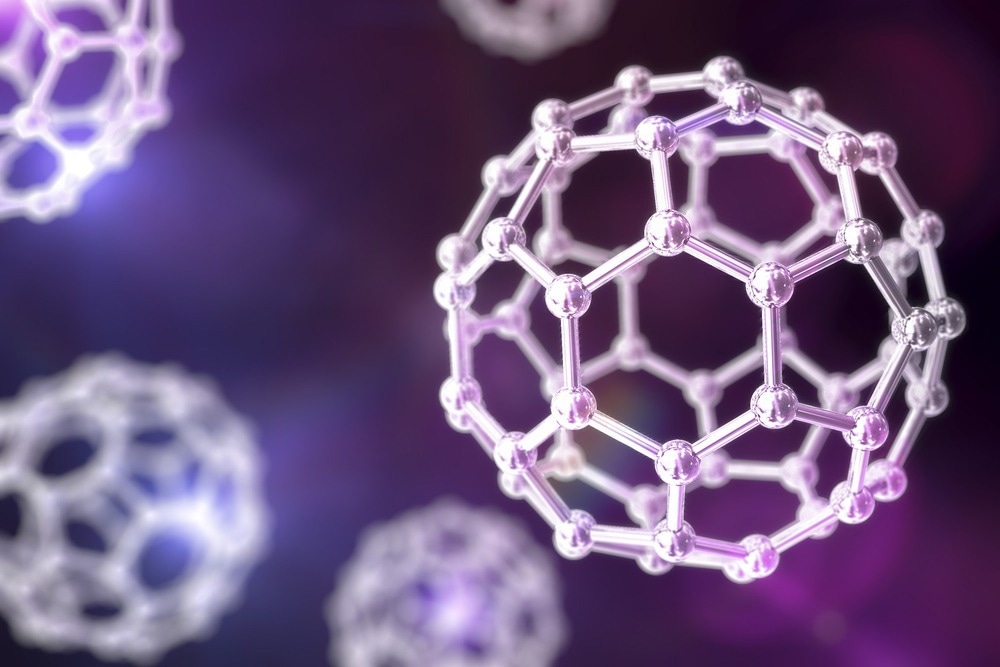Dispersion of nanoparticles (NPs) in a wide range of solvents is highly desirable for their application in sensing, self-assembly, optoelectronic devices, and the biomedical field. However, tuning the nanoparticle's solvent dispersion by chemical modification limits the range of solvents.

Study: Breaking the nanoparticle’s dispersible limit via rotatable surface ligands. Image Credit: Kateryna Kon/Shutterstock.com
In an article recently published in the journal Nature Communications, researchers developed smart nanoparticles by decorating their surface with ligands anchored electrochemically. These smart nanoparticles had the solvent sensing capacity that enabled their rotation and adaptation to surroundings, thus undergoing stable dispersion in a broad range of solvents.
The smart NPs were continuously electrodeposited into the electrolyte and overcame the limitation of electrodeposition on the electrode surface that existed in the traditional method. The smart silver nanoparticles (AgNPs) with anomalous dispersive property enabled them to resist aggregation induced by bacterial secretions. Moreover, the surface ligand's structural similarity to that of bacterial membranes facilitated their facile entry into bacteria, causing the antibacterial effect.
Dispersion of Nanoparticle in Solvents
Colloidal solutions containing dispersed nanoparticles in a liquid medium have a wide range of applications. The surface modification of nanoparticles with macromolecules or ions enhances the affinity of the nanoparticles towards solvents and improves the inter-particle repulsion force resulting in the formation of stable colloids.
The dispersion of existing nanoparticles has a dispersible limit of solvents and requires chemical modifications for their dispersal in a specific solvent. Thus, it is critical to simplify the practical applicability of nanoparticles by breaking their dispersible limit.
Charged nanoparticles form stable colloids in polar solvents via electrostatic repulsive forces between the nanoparticles. Moreover, the electric double-layer on the outer surface of the nanoparticle collapses in nonpolar solvents resulting in flocculation.
Nanoparticles with hydrocarbon chains as surface ligands can enhance the inter-particles forces between nanoparticles in nonpolar solvents, thus forming stable colloids. On the other hand, these hydrocarbon ligand chains contract in polar solvents and form aggregations of nanoparticles. Thus, surface grafting of nanoparticles with specific surface ligand type induced dispersible limit in them.
To this end, nanoparticles anchored with different surface ligands can impart various properties at various parts of nanoparticles resulting in an amphiphilic surface. However, due to the ligand's limited degree of conformational structure change, this method can only expand the solvent types.
Rotatable Surface Ligands on Nanoparticles
In the present study, the researchers synthesized smart nanoparticles by introducing rotatable surface ligands and breaking their dispersible limit. The surfactant ligands were anchored electrochemically to the surface of the NPs via ionic bonds could sense the nature of the surrounding liquid medium and adapt to it by rotation, which allowed the smart nanoparticles to disperse in a diverse range of solvents.
The formed smart AgNPs were composed of sodium dodecyl sulfate (C12H25SO4Na or SDS) and silver nitrate (AgNO3). Unlike conventional electrodeposition that confined the nanostructure's electrodeposition to the electrode surface, in the present approach, the AgNPs were continuously jetted from the electrode surface into the electrolyte solution, forming mist-like yellow trajectories.
The Tyndall effect in the electrolyte imparted a yellow color to the colloidal solution. Moreover, due to the presence of localized surface plasmon resonance (LSPR) on the surface of AgNPs, the colloidal solution with these nanoparticles showed an absorption peak located at 418 nanometers.
The AgNPs formed under a voltage of 30 volts were quasi-spherical in shape, with a mean size of approximately 25 nanometers. Furthermore, an increase in deposition voltage from 10 to 100 volts gradually decreased the mean size of AgNPs from 50 to 12 nanometers. At high deposition voltages, the Ag nanoparticles were more spherical.
The current approach allowed the continuous production of nanoparticles in the electrolyte solution by overcoming the constraint of electrodeposition on the electrode. The presence of SDS played a critical role in the production of Ag nanoparticles in the electrolyte solution, which otherwise were formed exclusively on the electrode surface.
Conclusion
In summary, with the help of the present work, the researchers demonstrated a facile approach to breaking the dispersible limit for nanoparticles via rotatable surface ligands, allowing their dispersion in a wide range of solvents.
The continuous electrodeposition of the smart AgNPs into the electrolyte solution enhanced the efficiency of the current strategy by transforming the electrodeposition method that was electrode-confined into a highly efficient and massive smart nanoparticle fabrication method.
This automatic electrodeposition method created a new avenue for smart nanoparticle's practical application. The colloidal stability and the ability of surface ligands to mimic the bacterial membrane offered them excellent antimicrobial activity, wherein the surface ligands facilitated the penetration of smart nanoparticles through the bacterial membrane to exhibit the antimicrobial effect.
Furthermore, the researchers anticipate devoting their future effort to shape and size control in smart AgNPs and envision applying the rotatable surface ligands to the nanoparticles of other materials for their application in colloidal chemistry, three-dimensional (3D) printing, and optoelectronic devices.
Reference
Liu, Y., Peng, N., Yao, Y., Zhang, X., Peng, X., Zhao, L., et al. (2022). Breaking the nanoparticle's dispersible limit via rotatable surface ligands. Nature Communications. https://doi.org/10.1038/s41467-022-31275-7
Disclaimer: The views expressed here are those of the author expressed in their private capacity and do not necessarily represent the views of AZoM.com Limited T/A AZoNetwork the owner and operator of this website. This disclaimer forms part of the Terms and conditions of use of this website.